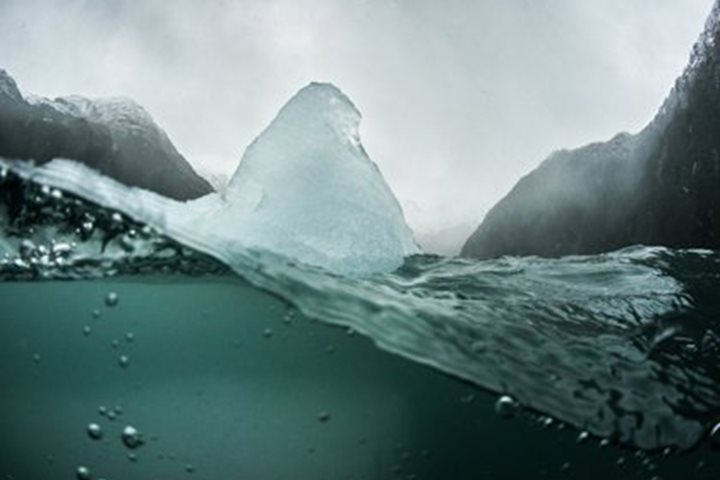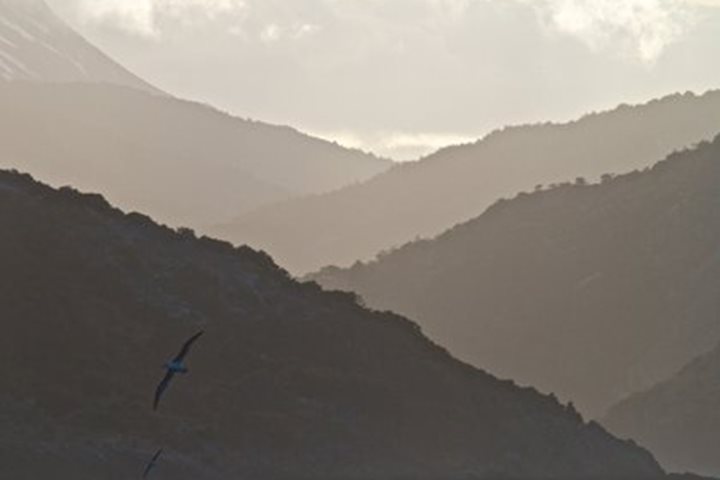All our guests made it safely to Buenos Aires some days ago, and after exploring the elegant city, joined us aboard yesterday for an early departure. We had to clear the dock while the tide was still high. The estuary of the Rio de la Plata, “River of Silver”, is 40 miles wide at the capital, and 200 miles wide at its outer mouth. It is huge, and shallow. We had to follow a tight, dredged channel between marker buoys 40 miles out to sea before our pilot left, for even this channel is only 30’ deep. This morning we are 25 nautical miles offshore and still have only 100’ of water beneath the keel.
A day at sea. When you reach the bridge and stare out at the ocean it looks completely empty. But wait—and watch! It takes about 20 minutes to work out what is water and what is not. Then you notice movement on, across, and over the water. Within the first two hours of the day before breakfast, the hawk-eyed naturalists on board had already recorded eight different species of seabird. Each has its own history, origin, and mission and their individual stories spell out miraculous journeys of stamina and precision. We see South American terns, which breed locally. Then several arcing brown scimitars which are great shearwaters. Among one group resting on the water are three beautiful yellow-nosed albatross. These two have come all the way from their breeding sites 2,000 miles out in the middle of the Atlantic on Tristan da Cunha island. Then, the dark sepia gliding silhouette of a white-chinned petrel, followed closely by that most elegant of albatrosses, the black browed, with black wings, a pure white head and rump, and an unmistakable orange bill. A large all-dark bird like a small albatross is the immature southern giant petrel. We pass one group on the sea, tearing lumps out of a floating carcass: possibly a dead South American sea lion. All three of these seabirds have come up from Cape Horn, following the cold Falklands current. It will be 10 more days before we reach their breeding grounds at the southern tip of South America. But the long-distance champion is a tiny black and white bird which sweeps low across the sea, or rests in small rafts which skitter off the waves at our approach. This is the tiny Manx Shearwater, barely bigger than a pigeon, which has flown 7,000 miles from its breeding islets off the coast of Wales. They will find their way back to the same islets, the same burrow, and the same mate next March for another breeding season. Incredible birds, long distance athletes with their own infallible GPS navigation system. Santiago gave us splendid talk on their lifestyles during the afternoon.
The oddest part of the day is to find the ship buzzing with dragonflies, hunting a swarm of flies which have landed on the ship. They must all have been blown offshore by squally weather. As the wind freshens, they cling in their droves to the bridge wipers; there must be thousands round the ship.
But the best is saved for last: our Global Gallery manager, pedaling away in the gym at the back of the ship, spots what all the naturalists on the bridge have missed: the unmistakable fins of killer whales. Captain Kruess takes the helm and keeps us abreast of them. They are relaxed and to our delight come alongside to look at us, a happy case of mutual fascination! First we see only a huge male, with a smaller female alongside, surfacing together. Then we espy a group of two more females with another male, his dorsal fin distinctively kinked. And then to our surprise a youngster appears ahead, leaping like a dolphin towards us, not wishing to miss the party. What a finale, leaving us plenty to talk about at the Captain’s welcome party this evening, where beverage and badinage flow freely.







